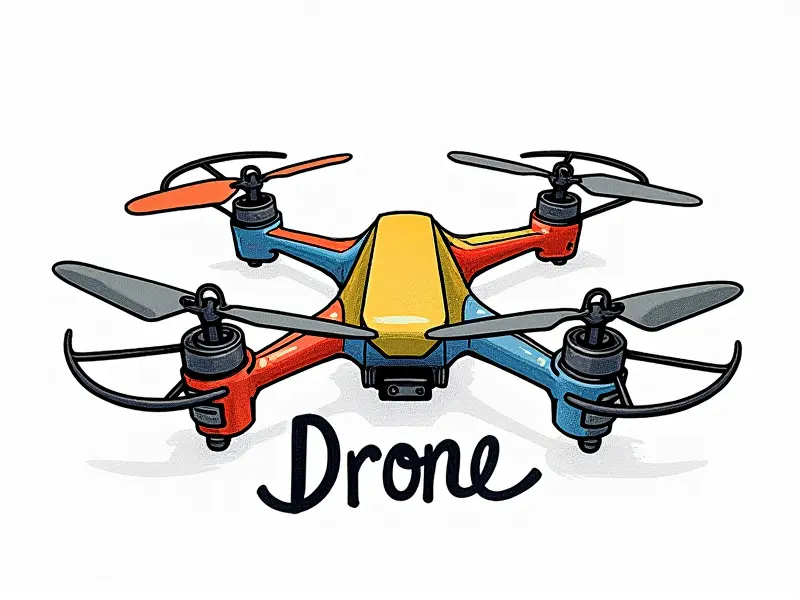RC plane FPV camera setup?

RC Plane FPV Camera Setup Guide
First-person view (FPV) technology has revolutionized the world of remote-controlled (RC) planes, offering pilots an immersive experience that feels like they are flying the aircraft themselves. Setting up an FPV camera system for your RC plane can be a complex process, but with the right knowledge and equipment, you'll be able to enjoy high-quality video feeds in no time.
Best FPV Camera for RC Planes
Selecting the best FPV camera is crucial for achieving clear and stable video transmission. Some top choices include:
- Runcam Split 2: Known for its high frame rate and low latency, making it ideal for fast-paced flying.
- TBS Unify Pro Black: Offers excellent image quality with a wide dynamic range and adjustable settings.
- Holybro Pixhawk FPV Camera: Compatible with various flight controllers and supports multiple video formats.
Top FPV Cameras for RC Aircraft
The following are some of the most popular FPV cameras among RC aircraft enthusiasts:
- Runcam Swift 2: Compact size with a high frame rate and wide-angle lens.
- TBS Unify Pro Silver: High-resolution camera with adjustable aperture for better light management.
- Holybro Pixhawk FPV Camera Plus: Enhanced version of the Holybro Pixhawk, offering improved video quality.
Easy FPV Setup Guide for RC Planes
Setting up an FPV system can seem daunting at first, but following these steps will make it easier:
- Select the Camera and Antenna: Choose a camera that suits your needs and select an antenna with good range.
- Mounting the Components: Securely mount the FPV camera on your RC plane, ensuring it is stable during flight.
- Connecting to Receiver: Connect the FPV transmitter to a compatible video receiver in your goggles or monitor.
Choosing the Right FPV Camera Module
The right camera module depends on factors such as frame rate, resolution, and power consumption. Consider these aspects when making your choice:
- Frame Rate: Higher frame rates provide smoother video but consume more battery.
- Resolution: Higher resolutions offer better image quality but require stronger signal strength.
- Power Consumption: Lower power consumption allows for longer flight times without compromising performance.
Optimal Antenna Placement for RC Plane FPV
The placement of the antenna is crucial for maintaining a strong and stable video signal. Here are some tips to ensure optimal placement:
- Avoid Obstructions: Keep the antenna clear from metal objects or other obstructions that can interfere with the signal.
- Broad Coverage: Position the antenna so it provides a wide coverage area, especially if you are flying over long distances.
Budget-Friendly FPV Camera Options for Drones
If cost is a concern, there are still several budget-friendly options available that offer good performance:
- Runcam Split 1: A more affordable alternative to the Runcam Split 2 with similar quality.
- TBS Discovery 3: Offers decent image quality and a wide-angle lens at an economical price point.
Maximizing Video Quality in RC Plane FPV
To achieve the best video quality, consider these tips:
- Adjust Camera Settings: Fine-tune settings such as exposure and white balance for optimal image clarity.
- Use High-Quality Antennas: Invest in high-quality antennas to ensure a strong signal transmission.
DIY FPV Setup for RC Aircraft Beginners
If you are new to FPV, setting up your system can seem overwhelming. Here’s a simple guide for beginners:
- Select Basic Components: Start with basic components such as a camera and receiver.
- Mount the Camera: Securely mount the camera in the center of the plane to avoid vibrations.
- Test Your Setup: Before flying, test your setup on the ground to ensure everything is working correctly.
Essential Tips for RC Plane FPV Setup
Here are some essential tips to keep in mind when setting up an FPV system:
- Plan Your Flight Path: Choose a flight path that minimizes interference and maximizes signal strength.
- Battery Management: Ensure your battery can power both the aircraft and the FPV equipment without compromising performance.
Step-by-Step Guide: FPV on Planes
Flying with an FPV system requires careful planning. Follow these steps to ensure a smooth setup process:
- Select Components: Choose the right camera, transmitter, and receiver based on your needs.
- Mounting Hardware: Install mounting hardware securely to prevent vibrations during flight.
- Test Before Flight: Test all components before taking off to ensure everything is working properly.
Essential Gear for RC Plane FPV Systems
To get the most out of your FPV experience, you’ll need these essential pieces of equipment:
- FPV Camera: The heart of your system, providing clear video feeds.
- Voltage Regulator: Ensures stable power supply to the camera and other components.
Conclusion
Setting up an FPV system for your RC plane can greatly enhance your flying experience. By choosing the right equipment, optimizing antenna placement, and following a step-by-step guide, you'll be able to enjoy high-quality video feeds and immersive flights. Whether you're a beginner or an experienced pilot, investing in a well-planned FPV setup will take your RC flying to the next level.

